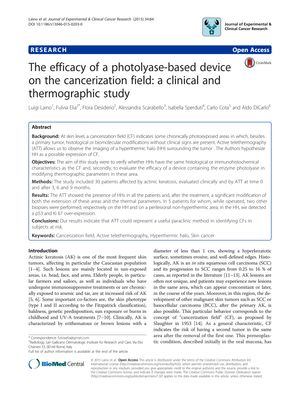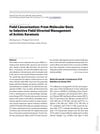The Efficacy of a Photolyase-Based Device on the Cancerization Field: A Clinical and Thermographic Study
August 2015
in “
Journal of Experimental & Clinical Cancer Research
”

TLDR The photolyase-based device significantly changed the size and heat of potential skin cancer areas in patients.
The study by Laino et al. investigated the use of active telethermography (ATT) to identify hyperthermic halos (HHs) as cancerization fields (CFs) in patients with actinic keratosis (AK) and assessed the effectiveness of a photolyase-based device on these areas. The study included 30 patients and used ATT to evaluate them at baseline, and after 3, 6, and 9 months of treatment with the device. The results indicated that HHs were present in all patients and that the photolyase-based device significantly altered the size and thermal parameters of these HHs. Biopsies from 5 patients showed p53 and Ki 67 over-expression in the HHs compared to non-hyperthermic areas, suggesting that ATT could be a valuable tool for identifying CFs in individuals at risk.
